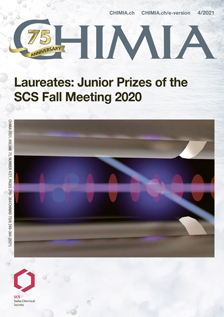DNA-tethered Polymersome Clusters as Nanotheranostic Platform
DOI:
https://doi.org/10.2533/chimia.2021.296PMID:
33902798Keywords:
Cluster, Dna tethering, Enzymes, Nanotheranostics, PolymersomeAbstract
Nanotheranostics combine the use of nanomaterials and biologically active compounds to achieve diagnosis and treatment at the same time. To date, severe limitations compromise the use of nanotheranostic systems as potent nanomaterials are often incompatible with potent biomolecules. Herein we emphasize how a novel type of polymersome clusters loaded with active molecules can be optimized to obtain an efficient nanotheranostic platform. Polymersomes loaded with enzymes and specific dyes, respectively and exposing complementary DNA strands at their external surface formed clusters by means of DNA hybridization. We describe factors at the molecular level and other conditions that need to be optimized at each step of the cluster formation to favor theranostic efficiency.Downloads
Published
2021-04-28
Issue
Section
Scientific Articles
License
Copyright (c) 2021 Claire E. Meyer, Cora-Ann Schoenenberger, Juan Liu, Ioana Craciun, Cornelia G. Palivan

This work is licensed under a Creative Commons Attribution 4.0 International License.
How to Cite
[1]
C. E. Meyer, C.-A. Schoenenberger, J. Liu, I. Craciun, C. G. Palivan, Chimia 2021, 75, 296, DOI: 10.2533/chimia.2021.296.







